Comedian Max Linder is trying to break into the movies but he’ll never make it unless he learns to take a hard slap to the face. This behind-the-scenes comedy features appearances from real Pathé Frères personnel, including Charles Pathé himself.
Home Media Availability: Released on Bluray.
You oughta be in pictures
A big thanks to Guillaume for helping me to see this film.
Max Linder was not only one of the very first comedy stars, he was one of the earliest film stars, full stop. His breezy charm and fussy “Man in the Silk Hat” persona won over viewers worldwide and his fans included Charlie Chaplin.
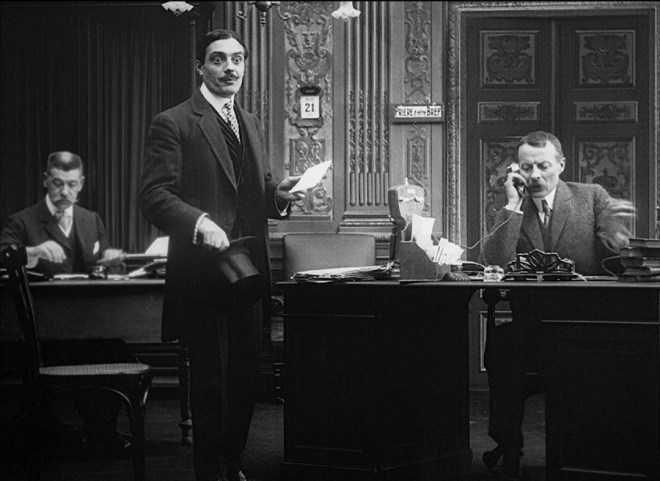
The real secret to Linder and the Max character’s success was the emphasis on believable situations. Linder would make strange and surreal films, to be sure, and venture into the inkiest of black comedy (the 1906 comedy Attempted Suicide features Linder trying to hang himself for the entire runtime as the incompetent police and local officials run about trying to save him but are tangled in red tape) but his best work stayed within the realm of the everyday.
This is the case with Max’s First Job. After all, most of us can relate to the nervousness involved in applying for employment. In Linder’s case, the interview is for a position at the famous Pathé film company. (Founder Charles Pathé and several other notables play themselves in the picture.)

According to marketing material of the time, the film was a sendup of Linder’s real-life debut at Pathé several years before. Motion Picture News states that:
“Max Linder’s behavior when he applied for a job as a Pathé Freres moving picture actor was such a good joke on him that it was decided to make a film of the event and accordingly Max was called upon to play the lead… the rough deal he received caused Max to forget that he was acting, and he turned suddenly upon one of his co-workers whose duty it was to abuse him and a rough and tumble fight ensued. The belligerents could not be parted until a stream of water was turned on them, and as soon as he could speak through anger and water, Max resigned, but reconsidered his decision later on, as his many admirers well know.”
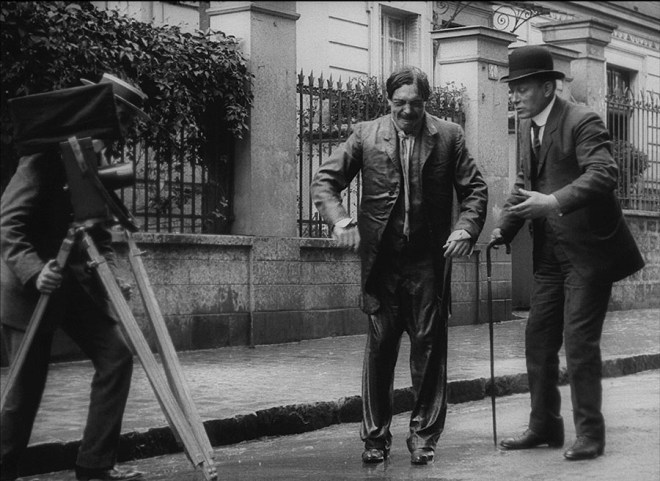
Now, anecdotes related in motion picture magazines are often worth approximately the paper they are printed on but this one is cute and harmless so let’s go with it.
In the film, Max gets the job and is assigned to a domestic comedy that ends with his wife and mother-in-law throwing him out the window and tossing household objects after him. The items grow progressively bigger until they drop a wardrobe on his head. An unwary passerby does not realize that a film is being shot and ends up in a brawl with Linder, which is then broken up by a hose-wielding local. (Garden hoses were kind of a big deal in French comedy.)
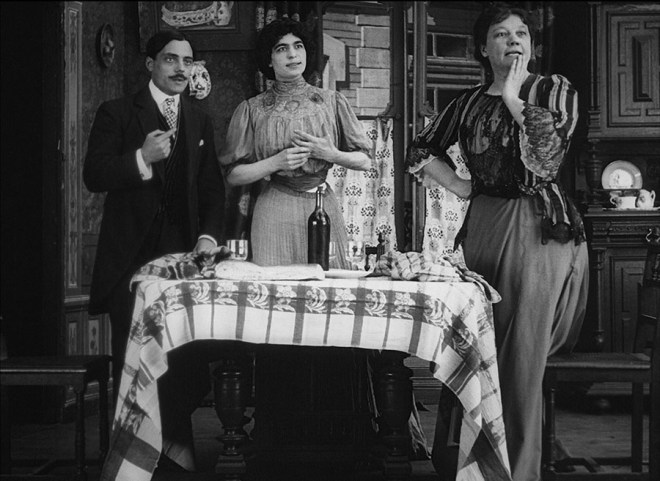
Obviously, any behind-the-scenes film from an earlier time is going to be of interest for historical reference alone. One aspect of Max’s First Job that really appealed to me was seeing Linder and his co-stars prepping themselves before the shooting of the film-within-a-film commenced. They are casually conversing with the director and receiving instructions and their nonchalant manner contrasts with the more extreme comedic acting that follows. It’s worth remembering that silent film actors were not only talented, they were talented in the use of multiple acting styles.
(Incidentally, the film is co-directed by Louis J. Gasnier, who journeyed to America and enjoyed success with serials like The Perils of Pauline. His later work, most notably Reefer Madness, tends to overshadow his career in France but he deserves respect as one of the pioneer directors of the early film industry.)
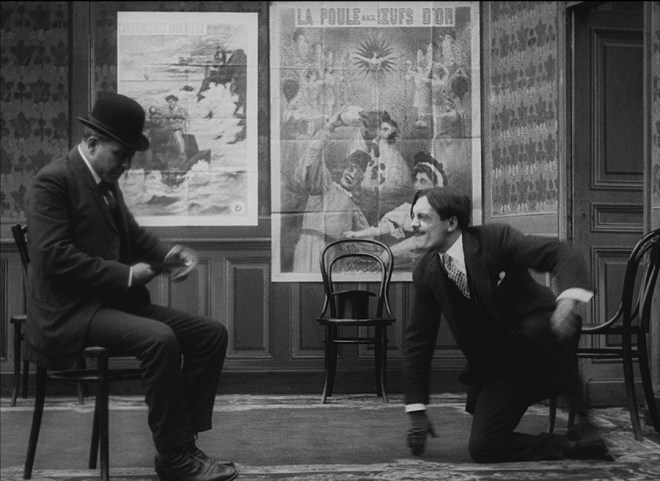
Linder himself is, of course, the same smiling charmer that we all know and love and, as is typical with his pictures, his charm is quickly tested by circumstances. He is expected to drop, roll, fall and take a punch from the moment he is hired and it doesn’t always go well. The rougher slapstick is funny but where Linder really excels is in the smaller bits dealing with minor annoyances. For example, he accidentally falls out of a chair and then spends the rest of the interview scene making sure his seat is secure.
I am not sure if it was the original intent of the filmmakers but this picture does not have title cards and is an example of purely visual storytelling. It also makes this French film truly international.

By the way, watching this film, you may notice multiple roosters pasted on various bits of furniture. This was the logo of the Pathé film company and in the wild west days of film copyright law, filmmakers would attempt to discourage piracy by embedding their logo, tinting the title cards a particular shade (tints could not be easily copied), or even having the company name pop up on a stick mid-picture. This film also employed the clever method of having the actors pose in front of giant Pathé posters, so we establish the company name and show off upcoming films at the same time.
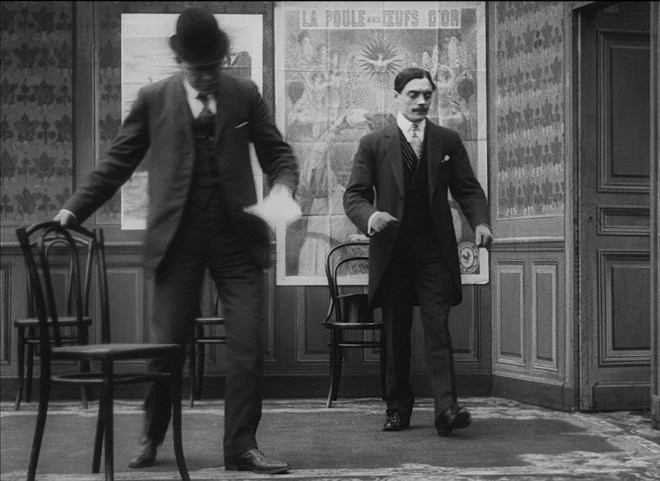
These details were obvious thanks to the beautiful HD transfer I viewed. While all films benefit from a high-quality transfer, early motion pictures particularly profit from such a presentation. Filmmakers of the time relied less on editing and more on details observed within the busy frame. Obviously, if a movie is blurry or damaged or otherwise presented in lower resolution, these details can easily become lost in the shuffle.
This transfer allows us to see the expressions on Max’s face, the fact that the desks used on the set are slightly shabby and battered, we see seams in the jackets and the details of a lace ruff. Drinking it all in improves the film enormously and anyone interested in the history of furniture or fashion will surely appreciate the closer look.

This is a pretty typical Max Linder comedy of the period and is thus enjoyable, light and bubbly. An amusing way to spend seven minutes.
Where can I see it?
Released on Bluray as part of Le cinéma de Max Linder, a French all-region box set. (Some sources mark it as Region B but I had not trouble playing it in my Region A player.)
☙❦❧
Like what you’re reading? Please consider sponsoring me on Patreon. All patrons will get early previews of upcoming features, exclusive polls and other goodies.
Disclosure: Some links included in this post may be affiliate links to products sold by Amazon and as an Amazon Associate I earn from qualifying purchases.
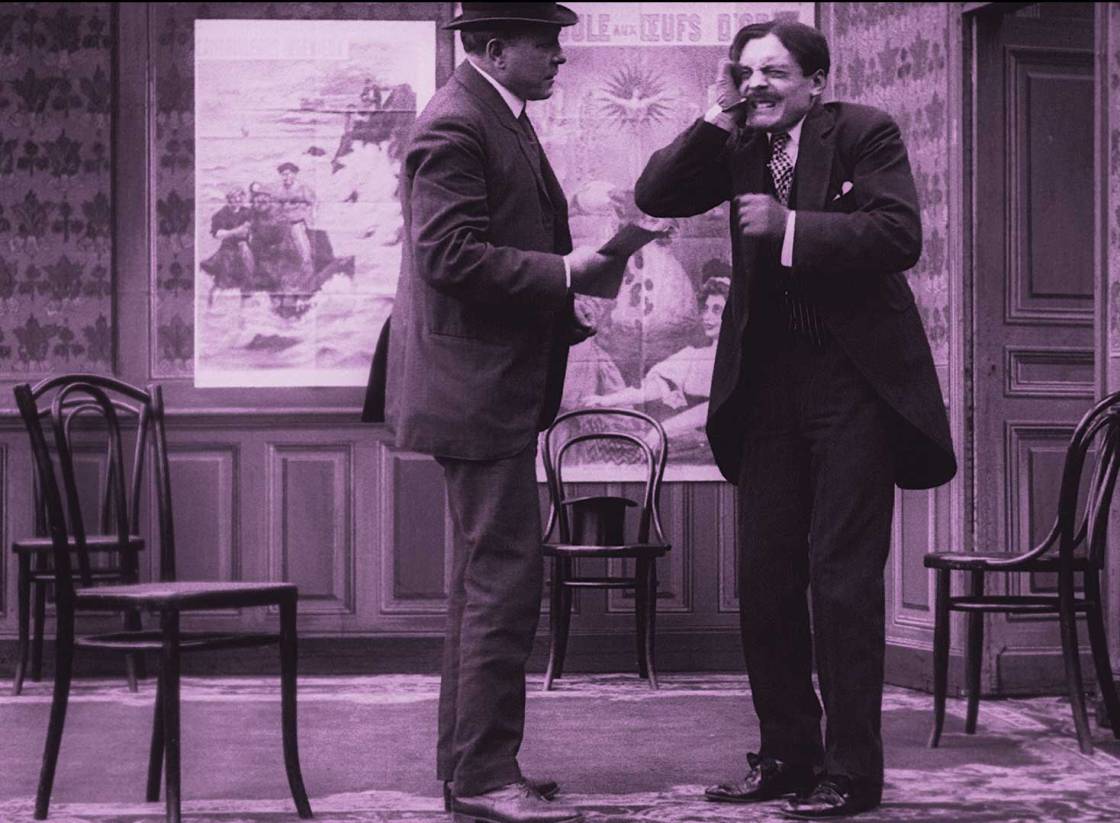
Are there English translations of the titles in this set?
Yes